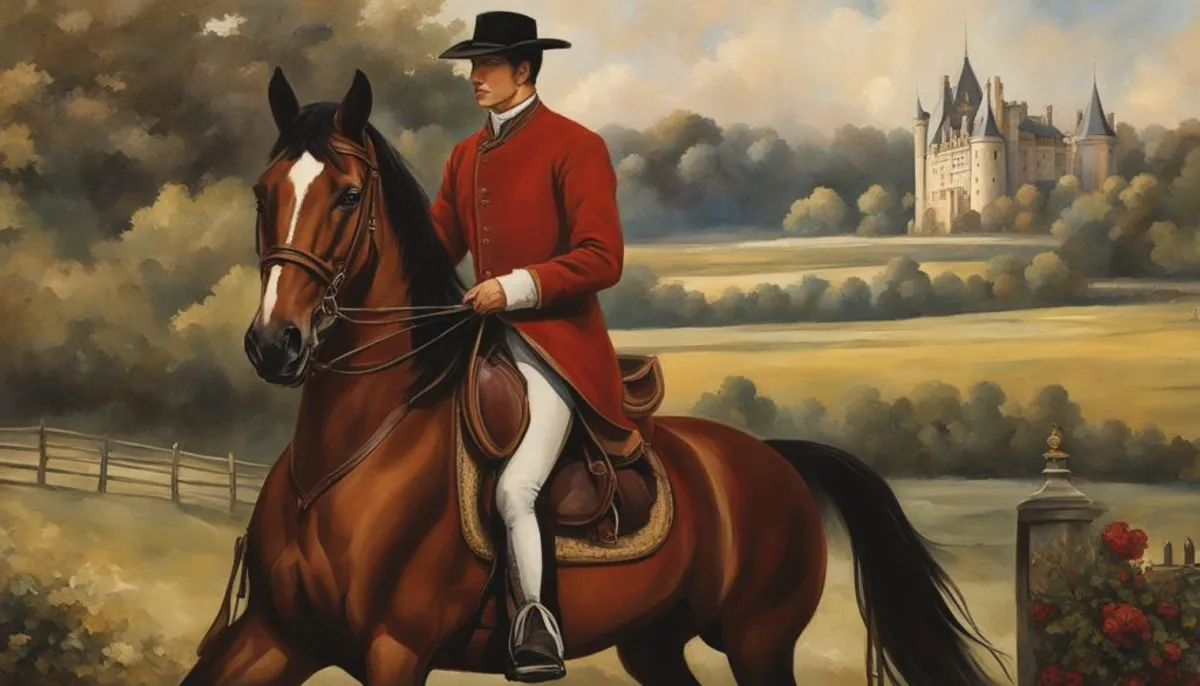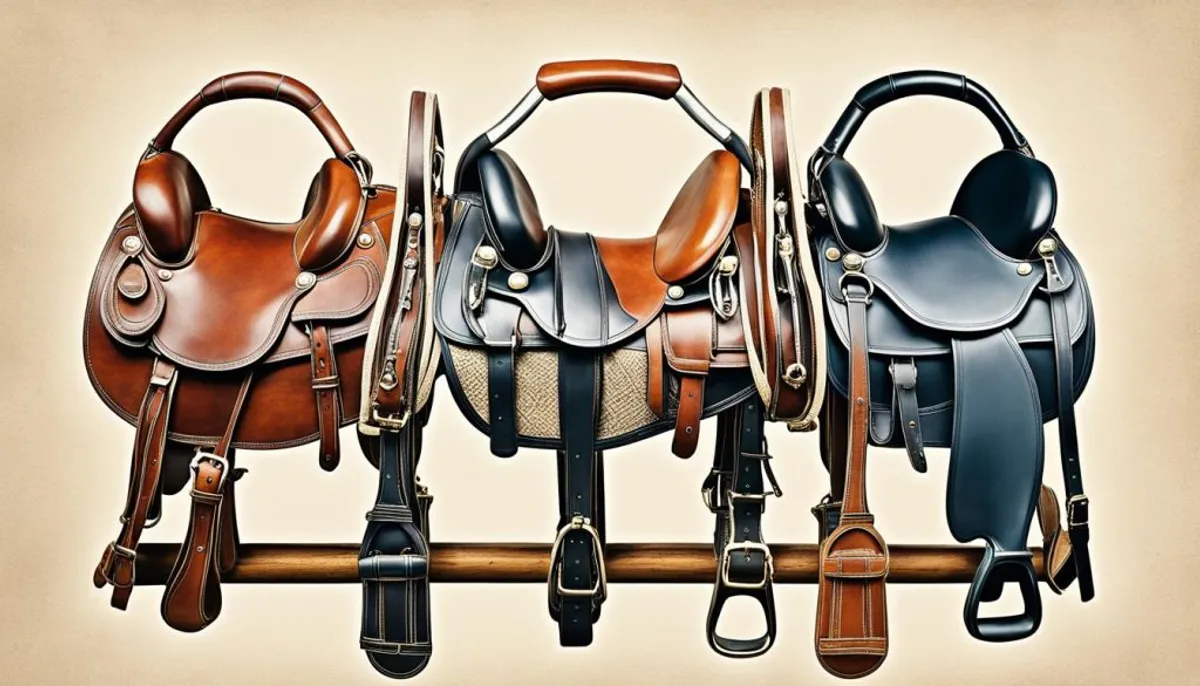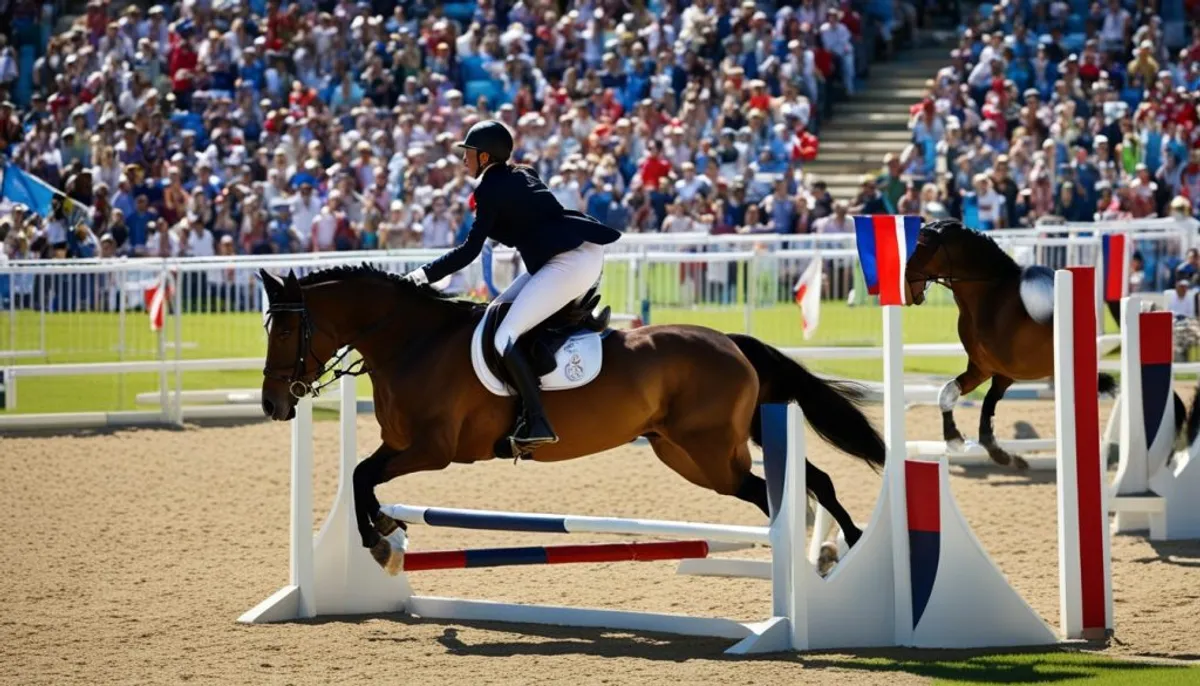Equestrianism has been practiced for millennia. It has changed significantly over the centuries to adapt to society. From the domestication of horses to modern innovations, the history of equestrianism in France is rich.
It is full of traditions, sporting achievements, and new ideas. You will discover horse breeding, equestrian sports, and well-established traditions. Major sporting events and renowned riders are also part of this history.
This saga invites you on a journey through time. It takes you from the first Parisian riding schools to current Olympic events.

Main Points to Remember
- Equestrianism is an ancient practice that has evolved in France over the centuries
- The history of equestrianism reflects the changes in society and equestrian culture
- From the origins of horse domestication to modern innovations, France has a rich equestrian tradition
- Horse breeding, equestrian sports, and famous riders are integral parts of this history
- Equestrian traditions and significant events are at the heart of the history of equestrianism in France
Equestrianism in Paris in the 20th Century
Before World War II, Paris was a major hub for equestrianism enthusiasts. Historic riding schools run by experts were everywhere. They could be found on well-known streets like Rue Chalgrin. The war nearly wiped them out, but places like L'Étrier de Paris held strong.
L'Étrier de Paris, a Historic Club
In 1895, L'Étrier de Paris was founded, one of the oldest equestrian clubs in the city. This club has managed to remain popular and family-oriented over the years. It welcomes everyone who loves horses, from beginners to experts. Thus, it continues to keep equestrianism alive in Paris.
Despite the trials of the 20th century, Paris has retained its equestrian treasures. L'Étrier de Paris has shone, showcasing the importance of equestrianism in the city. It preserves the tradition and passion for horses in the French capital.
The Evolution of Equestrian Equipment Over the Centuries
The equestrian equipment has changed significantly over the millennia. It began with the domestication of the horse in the steppes of Asia. Then came the sophisticated saddles of antiquity and armor of the Middle Ages.
Changes were driven by military needs and advancements in daily life. Equipment also improved thanks to technology.
The Domestication of the Horse: The Origins
More than 4,000 years ago, horses were tamed in the steppes of Asia. At that time, people used simple bridles made of ropes or leather. This allowed them to guide the horses.
Over time, accessories improved. The first stirrups and saddles emerged to make riding easier.
Antiquity: Saddles and Stirrups
The Greeks and Romans greatly improved equestrian equipment during antiquity. They invented saddles for better comfort and safer riding. These saddles were a significant advancement for equestrianism.
Stirrups appeared in Asia and then became popular in Europe. They provided more stability for riders. Thus, equestrianism became safer and more efficient.
The Middle Ages: Armor and War Saddles
In the Middle Ages, equipment was designed for war. War saddles provided better control. They ensured the stability of riders during charges.
Armor protected horse warriors. These advancements made cavalry more powerful on the battlefield.

From the simple ancient equipment to the latest technologies, equestrianism has always improved. Today, it offers the greatest comfort and performance possible for riders and their horses.
Equestrian History
The history of equestrianism in France is very rich. It began with the domestication of the horse. From ancient times to the Olympic Games, equestrianism has always evolved. Today, we will see how equestrianism has developed through the ages and in France.
The beginnings of the history of equestrianism date back to the domestication of horses. This step marked the history of our relationship with animals. Over time, horses have helped in wars, transportation, and the economy. Thus, the art of horseback riding took shape, passing practices from generation to generation.
In the Middle Ages, horseback riding was crucial for battles. Cavalry and knights dominated this era. They used special saddles that provided greater control. This period marked a significant step in the equestrian tradition, which later evolved to appeal to the nobility.
In the 1900s, in Paris, equestrianism took on new momentum. Prestigious clubs, including L'Étrier de Paris, were born. These places were key for learning about horses. Paris thus became a true center for the history of equestrianism.
Today, equestrianism in France is experiencing new highlights. New sporting events have emerged, and famous riders have arisen. This shows that the love for horses remains strong, with a tradition that is still current.
Equestrianism at the Olympic Games
Equestrianism has been linked to the Olympic Games since 1896. Since 1900, at the modern Games, great horse-rider pairs have distinguished themselves. Their performances have marked the history of this discipline.
Exceptional Pairs
From successes in dressage to show jumping feats, equestrian athletes demonstrate great talent. Pairs like Lis Hartel and Jubilee have charmed the world. They won medals, showing that anything is possible, even with a disability.
The Olympics Have No Age
The equestrian events welcome participants of all ages. You can see child prodigies and seniors. This sport shows that excellence transcends age groups. Thus, experienced riders and beginners meet in fair competition.
The equestrian Olympic records and all-age Olympic participations fascinate sports lovers. Equestrianism at the Olympic Games celebrates the bond between the rider and their horse.

Olympic Incidents and Anecdotes
The history of the Olympic Games is full of events that have remained etched in memory. These moments have made competitions even more captivating. They show that uncertainty is also part of the sport.
There have been issues like a rein breaking mid-jump. Or the injury of a horse just before its performance. We also remember a rider who fell during an event. These incidents, nonetheless, highlighted the strength and professionalism of the athletes.
Exceptional stories endure, such as that of a rider who had to stop to adjust their saddle. Or the rider who lost a stirrup and continued their race on one leg. These facts are part of the legends of the Olympic Games.
| Notable Incidents | Olympic Anecdotes |
|---|---|
| Breaking a rein mid-jump | Rider needing to reattach their saddle during competition |
| Horse injury before competition | Rider losing their stirrup and continuing to gallop on one leg |
| Fall of a rider during a course | Horse escaping before the start |
These equestrian Olympic anecdotes have added excitement to the Olympic Games. They have shown the determination of riders in the face of adversity. This has strengthened the Olympic spirit and admiration for these athletes.
Past and Future Olympic Disciplines
Equestrian sports have always been important at the Olympics. They include dressage, show jumping, and eventing. These events have been part of the Olympics for a long time. However, some disciplines have disappeared or emerged over time.
Polo and Vaulting at the Olympics
Between 1900 and 1936, Olympic polo was popular. It required skill and strategy. Unfortunately, it was removed from the Olympics later.
In 1920, Olympic vaulting impressed spectators. This combination of gymnastics and equestrianism was special. But it also disappeared from the Olympics afterward.
The evolution of equestrian sports at the Olympics is very interesting. One wonders if they will return or if there will be new sports. These Olympic equestrian disciplines showcase the beautiful relationship between man and horse.
| Discipline | Presence at the Olympic Games |
|---|---|
| Polo | 1900-1936 |
| Vaulting | 1920 |
| Dressage | Since 1912 |
| Show Jumping | Since 1912 |
| Eventing | Since 1912 |
Multi-talented Riders
The history of Olympic equestrianism is full of versatile riders. These athletes have excelled in various disciplines. Their success shows they can switch disciplines while demonstrating great talent.
Some gymnasts have transitioned to equestrianism with much success. Their skills in gymnastics have translated to equestrianism. They have shown great balance in both sports.
Several show jumpers have tried eventing. This has allowed them to combine their agility with skills in dressage and cross-country. They have adapted to this new discipline.
Conversely, some steeplechase runners have taken up dressage. Their success in this transition demonstrates the incredible diversity of equestrianism. Each of these changes enriches the history of the sport at the Olympic Games.
Versatile Athletes
- Gymnasts turned riders
- Show jumpers converted to eventing
- Steeplechase runners moved to dressage
These versatile riders have showcased their great talent by covering multiple disciplines. Their history adds to the richness and diversity of Olympic equestrianism.
Conclusion
The history of equestrianism in France is rich and captivating. It showcases ancient traditions, sporting achievements, and technical advancements. From the beginning of horse domestication to today's Olympic sports, this practice has evolved.
The performances of horse-rider pairs and the highlights of the Olympic Games have marked French equestrianism. It shows us its diversity and rich past. This conclusion aptly summarizes the importance of discovering the history of equestrianism in France.
Equestrianism is more than just a sport. It is a story of friendship and respect between man and animal. This special relationship is at the heart of the beauty of French equestrianism. Such a precious legacy must be preserved for future generations.
FAQ
What are the historical origins of equestrianism in France?
Equestrianism dates back a long time. It has changed over time, showing how society and culture around horses have evolved. From the first time a horse was tamed to today, equestrianism in France is full of traditions and discoveries. These changes come from the efforts of horse enthusiasts and athletes who have marked history.
What do we know about the historic riding schools in Paris?
Before World War II, Paris was an important center for equestrianism. There were many riding schools. They were opened by very well-known people. These places are located on historic streets like Rue Chalgrin. The war and the city's development threatened these locations.
However, despite these challenges, places like L'Étrier de Paris continued to exist. This shows how strong the passion for horses is.
How has equestrian equipment evolved over time?
The equipment used for equestrianism has changed significantly. It started with the domestication of horses in Central Asia. Then, sophisticated saddles emerged, followed by protective gear in the Middle Ages.
Changes stem from military needs, advancements in daily life, and technological progress. Each step has made equestrianism safer and more enjoyable for riders and horses.
What are the key moments in the history of equestrianism in France?
Equestrianism has always been important in France. It has managed to reinvent itself over the years. From the first use of horses to the present day, the French have contributed significantly to the world of equestrianism.
Their history is full of highlights, from ancient disciplines to those seen at the Olympic Games. Each moment has helped shape equestrianism into what it is today.
What are the most remarkable achievements of French Olympic riders?
Since 1900, equestrianism has been part of the Olympic Games. And French riders have performed wonders there. Some have broken records in dressage. Others have impressed with their performance in show jumping.
These athletes have left a mark in the history of equestrianism. Their brilliant accomplishments will remain in the memories of fans of this sport.
Have there been memorable incidents during Olympic equestrian events?
The Olympic equestrian Games have not been without some hurdles. Sometimes, unexpected things happen. Like a rein breaking during a jump. Or an injury before a competition, testing the courage of riders.
These challenges highlight how demanding equestrian sport is. They emphasize the importance of training and the bond between the rider and the horse.
What equestrian disciplines have been present at the Olympics in the past?
The Olympic Games have featured different equestrian disciplines over time. In addition to events like dressage, other sports like polo were present. This discipline was part of the Games several times between 1900 and 1936.
Vaulting, which is a discipline combining gymnastics and equestrianism, was also Olympic in 1920. This shows the diversity of equestrian sports that have made their mark at the Games throughout history.
What are examples of versatile Olympic riders?
There are riders who excel in more than one discipline. For example, some gymnasts have become very good at equestrianism. Or show jumpers who have transitioned to eventing. There have even been steeplechase runners who took up dressage.
These athletes demonstrate that the world of equestrianism is vast. And that there are different talents that can shine across multiple equestrian sports.
RelatedRelated articles



